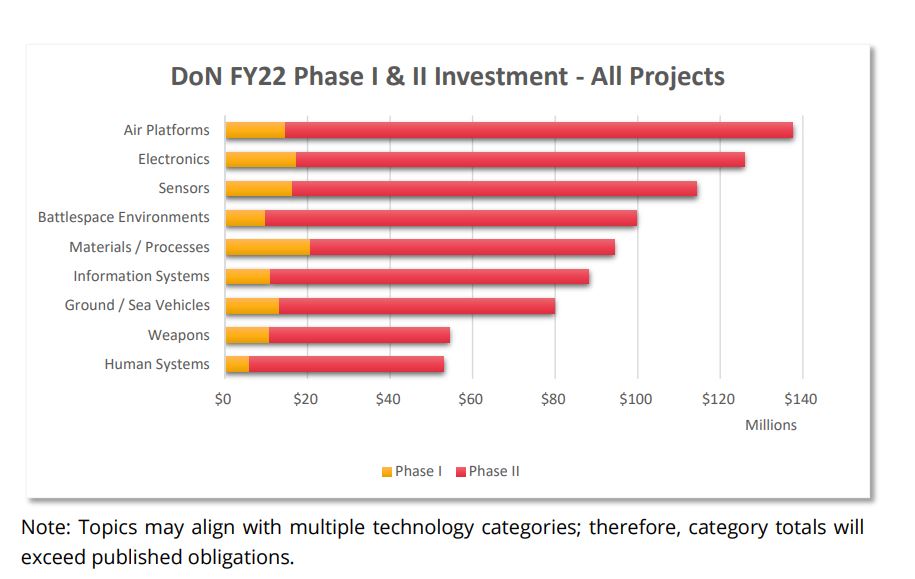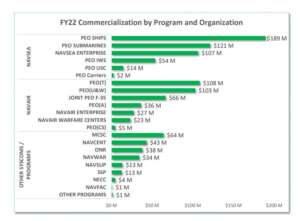Navy tech bridges connecting small businesses with its needs
Robert Smith, the director of Department of the Navy’s Small Business Innovative Research (SBIR) and Small Business Technology Transfer (STTR) programs, said the...
The Department of the Navy now has 15 locations from the Washington, D.C. area to London to Hawaii where it’s on the hunt for innovative companies.
Over the last almost four years, the Navy changed its approach from waiting for new and emerging firms to find them to opening their doors where their bases and needs exist.
Robert Smith, the director of Department of the Navy Small Business Innovative Research (SBIR) and Small Business Technology Transfer (STTR) programs, said these tech bridges, which are physical locations outside the bases, team with local businesses to find innovative small firms.
“We’ve got those that already know the region working with the Navy, who know what’s inside the fence and know what the Navy needs, so we can have that conversation. They are there as connectors of folks so we get that conversation started and help them along the way,” Smith said on Ask the CIO. “Mostly they’re connected with laboratories and warfare centers. They’ll usually have that key strength, like an underwater specialist or an unmanned specialist. They have those different conversations and have the ability to say, ‘hey, you may be talking to a Tech Bridge in San Diego, California. But I need to connect you with the folks up in Newport, Rhode Island.’ They’re not always going to have the answer. But they’re charged to find out who does.”
Smith, who spoke recently at the ACT-IAC Emerging Technology and Innovation Conference in Cambridge, Maryland, said the Navy’s goal is to find both the folks who know how the government works and the young innovators who may come to a problem set or current technology with a different viewpoint.
“The beauty of the SBIR program is you’re talking three-to-five-to sometimes seven years to do technology development. During the time that they’re doing that technology development, those two young people in their dorm room or in their garages have time to grow that two person company into that 20-person software company or that 200 person material delivery company,” he said.
The Navy’s next open topics opportunity kicks off July 13 to Aug. 15. Phase I is looking for approaches to adapt commercial solution to either fill a capability gap, to improve performance or to modernize an existing capability. This would be a four month, $75,000 award.
The Phase II SBIR/STTR open opportunity would include a competitive selection based on results of Phase I and initial Phase II proposal and tailored awards to transition technology.
Topics range from logistics in a congested environment to a holistic common operating picture to improving the launch, and recovery of air, sea, surface and unmanned underwater vehicles from naval vessels.
Smith said these open topics and other efforts under SBIR/STTR are part of how the Navy needs help to move faster, find and deploy innovative technologies and make these capabilities commercially available to benefit the nation.
“At navysbir.com there is a search engine so you can look at every topic we’ve ever awarded. When you do that, you get two really important pieces of information, the technical point of contact that had that topic, who you can reach out and still talk to and find out how’s the progression going for that technology? The other one is you get the company that got the award. How was it to work for the Navy? Were they good partners? Do you enjoy working with them? And most of the time, hopefully, they’re going to say, ‘great partners, we’re still working strong,’” he said.
Smith added that topics for SBIR/STTR open broad agency announces come from the sailors and marines in the fleet and force.
“Right from the deck plate where the sailors and marines are talking to us, to the fleet and force admirals and generals going, ‘I’ve got a problem you need to work on,’” he said. “With our topics, we always ask the question upfront before the topic gets into a solicitation, what happens if it works? And people go, ‘Hmm, what happens if it works? Where is it going to go? Is it going into that platform, that system? Or you’re going to hand it directly to the Marines or the sailors? Who’s going to pay for it? Are they interested? Do they want it?’ So at least we’re having the conversation. I’m not committing them to a legal binding agreement, but at least we’re talking to each other to make sure I’m working on something that if it works, they’re going to want it?”
The data shows that the SBIR and STTR programs are proving their value annual.
The Navy received 2,181 total proposals in fiscal 2022, most of which were for Phase I funding.
The Navy’s annual SBIR/STTR report shows 30% of the proposers were new to the service’s innovation programs out of the 990 total small businesses who submitted proposals
The service made 383 new Phase I and 243 Phase II contract awards in 2022.

The DoN also made 220 Phase III awards, surpassing $1 billion in total funding for this commercialization phase. The Navy accounted for 50% of all Phase III awards across the Defense Department.

Smith said the Navy also isn’t shy about borrowing from other military services and DoD agencies, especially if they have already solved a similar problem.
“As I hear the Navy talk about how we need to move quicker, we need to work with these companies that we need to develop things. I really think what they need to look at is to scale the SBIR program,” he said. “We’ve proven that we can do things quickly. We’ve proven we can work inside the budget cycle and we’ve proven that if you need it, American industry can deliver. But give me more than 3.2% of the extramural research dollars, and we can do more. The next conversation we are going to have is how we can we use SBIR to build, test and get it in the hands of the sailors of the Marines? You’ll be amazed at the innovation that occurs by just iterating that technology in the hands of the user.”
Copyright © 2025 Federal News Network. All rights reserved. This website is not intended for users located within the European Economic Area.
Jason Miller is executive editor of Federal News Network and directs news coverage on the people, policy and programs of the federal government.
Follow @jmillerWFED







